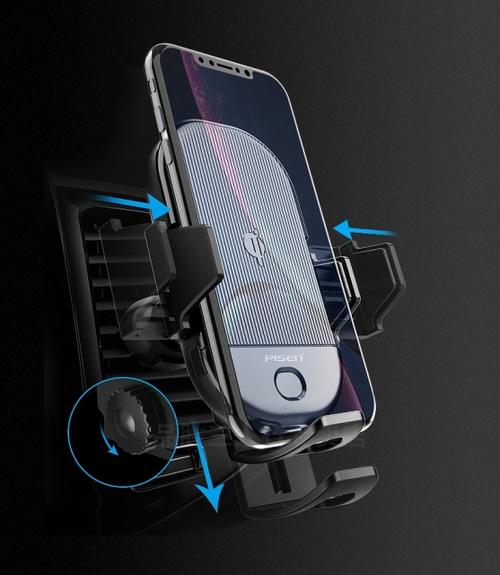
Intel bought Mobileye in 2017, and now they are advancing the development of autonomous driving technology and driver-assist systems. Their innovations include software and computer chips as well as collision avoidance devices. MobilEye created Riad, a prototype for self-driving cars. Intel plans to incorporate the technology into its own vehicles. Interested in how these technologies are advancing the future of transportation? Continue reading to find more.
Intel acquired Mobileye 2017
Intel recently purchased Mobileye, which specializes in digital vision technology. This is a crucial component of self-driving vehicles. This acquisition will allow Intel to expand beyond chips and data centres to include services that support autonomous vehicles. Intel also hopes this acquisition will be attractive to automakers with limited in-house expertise in autonomous vehicles, who rely on Google or other companies for these services.
Mobileye acquires software to enable autonomous vehicles. EyeQ is a system -on-chip that processes visual information without compromising on speed. The company has already secured contracts with 27 automakers. Mobileye's capabilities will now extend beyond automobiles to a wider range industries. Mobileye's investment by Intel will enable it to expand its product line and focus on business-tobusiness applications.

MobilEye can be used to avoid collisions
Mobileye is a leading manufacturer of collision avoidance systems that employs a sophisticated vision sensor to detect threats. This system constantly measures distances between objects and their relative speeds in order to calculate the collision risk. Mobileye is the leading collision avoidance technology in the world, and has been selected by leading automotive companies. These are the benefits of MobilEye's system. Let's find out why it is so important.
This innovative technology combines artificial intelligence with telematics to alert drivers of potential collisions. It continuously scans the road ahead, identifying hazards like pedestrians and cyclists. The system warns drivers by sending out audio and visual warnings, before they cause an accident. Moreover, it works in all kinds of weather, including nighttime. This technology can detect obstacles in real-time, so drivers don't have to rely solely on their car's odometer for information about what to expect in future.
EyeQ is a custom accelerator processor chip
Mobileye's EyeQ system-on chips provides processing power to support ADAS functions. EyeQs support both fully and semi-autonomous drive and can be used for single or dual-camera sensor applications. They can process Lidars, radars, as well surround cameras. EyeQ processors use TSMC technology. For this reason, they can also support the latest operating systems, including Windows 10.
Mobileye's EyeQ is the core of its technological leadership. EyeQ's high performance, scalable hardware accelerator architecture allows for state-ofthe-art computer visual performance. The EyeQ Ultra will be automotive-grade by 2025 and will include EyeQ6L and EyeQ6H. Its strong architecture will allow for a new age in mobility, with a higher level safety.

MobilEye created Riad, a prototype that can drive itself.
MobilEye's prototype car is a far cry from the autonomous vehicles that are currently available in many cities around the world. This technology requires active participation by the driver in many aspects of driving. But the company has built up a prototype of its own that can navigate challenging environments with little to no human input. It is able to negotiate with pedestrians or jaywalkers, make 180-degree turns at multiple signals and ride through roundabouts.
The company plans on building an entire autonomous stack. They will test each component individually before combining them. The company plans on establishing a commercial fleet in three major cities of self-driving automobiles by the end 2022. The prototype self driving vehicle from the company can travel safely over four million miles per year. It can also detect a pedestrian before a collision, and can make adjustments to its course accordingly.
FAQ
Is it hard to be a mechanic apprentice?
It's not easy, however, it is very rewarding and offers many opportunities for growth.
You must have patience and perseverance. You will also need to be able fix cars, trucks and motorcycles.
Customers and loved ones can place a lot of pressure on you. You should not feel pressured into making difficult decisions.
If you like fixing cars, this could be a great career option. It's a job where you can earn a decent salary and build up your business.
Perhaps you prefer a different route. If this is the case, you might want to become a technician.
This could involve using your technical knowledge to support other employees. This could be a way to help technicians with their problems or to teach them new techniques.
Another option is to be a service advisor. This is where you can offer advice and assistance to customers who bring their vehicles to a garage.
Your choice is based on what you choose to do. There are many options, so you can choose the one that suits you best.
Are you a mechanic or a technician? Can I study part-time?
A degree isn't necessary, but it certainly helps. Most employers prefer candidates who have studied for a full degree rather than those who haven't. It shows that you've worked hard and are determined to succeed.
It doesn't mean that you can't work while you study. Some universities let students complete their coursework in the summer and then continue their studies during the school year. Others allow students to study part-time all year.
What qualifications do you need to be a mechanic?
A series of tests is required to be a mechanic. These include:
-
A general knowledge test
-
Practical exam
-
An apprenticeship test
These tests are designed to ensure that you understand the basic concepts of mechanical engineering and physics before you start working as a mechanic.
These tests will allow you to be a mechanic once you have passed them. You will still need to complete an apprenticeship. This will involve trade training.
To learn all you can about vehicle repair, you will need to take classes and workshops. Working alongside skilled mechanics is also a must.
You'll need a high level of concentration and attention to detail if you want to succeed as a mechanic. It is essential to pay attention to all aspects of vehicle repairs.
You'll need patience and persistence to become a successful mechanic. If you don't like to follow instructions, then this may not be the right career path for you.
But if you love cars and enjoy fixing them, you could be very happy in this line of work.
How can I prepare to become a mechanic apprentice?
It is essential to understand what you are getting into. You need to understand the mechanics of cars and how they work. This will make it easy to find the right place to start your first day in the garage.
You should also know how to fix common problems such as tires or broken lights.
These lessons will help you to identify and fix problems.
It is also important to know how the different pieces fit together in order to put them together again.
Finally, be proficient in using tools safely and efficiently.
All these aspects will help you become a competent technician.
What length of an automotive course is it?
An automotive course is three years long.
The first year of your training is devoted to theory. You will learn all about cars. Practical training is the second year. You will learn to drive, fix engines and perform other tasks around the car. The final year is spent doing a placement at a local garage, which gives you experience in fixing real-world problems.
Statistics
- 52% of Mechanics in the United States think their salaries are enough for the cost of living in their area. (indeed.com)
- The U.S. Bureau of Labor Statistics (BLS) reports that the job outlook for automotive service technicians and mechanics is expected to decline by 4% from 2019 to 2029. (indeed.com)
- There were 749,900 jobs available for automotive service technicians and mechanics in 2016, which is expected to grow by six percent through 2026. (jobhero.com)
External Links
How To
How to become an automotive technician
A technician who works on vehicles is an automotive technician. He/she works in car dealerships as well as auto shops, garages, and service centers. He/she works with customers to repair their cars and trucks, ATVs or snowmobiles. An automotive technician must know how to diagnose problems and perform repairs efficiently, safely, accurately, quickly, and correctly.
To become an automotive technician, a person must first earn an associate's degree from a vocational college. After completing this program, he/she will need to pass the National Institute for Automotive Service Excellence's (ASE) certification exam. ASE stands to American Society of Mechanical Engineers. The ASE certification test consists two sections. The first section tests the ability to use mechanical knowledge. The second section tests the ability to apply practical skills. To pass the test you must go to one of the authorized testing facilities. These locations can be found online or at your local auto dealer.
After passing the test, a candidate must pass a state examination before becoming licensed as an automotive technician. This process is different depending on where you live. Some states require applicants to take a training course while others allow them the freedom to study on their own. Some states require technicians to be licensed immediately upon receiving their license. Other states wait until they have been employed as automotive technicians for at least six month.
A person must apply to an auto dealership in order to get started as an automobile technician. Most new employees work as apprentices after they have been hired. Apprenticeship programs usually last three years. This is when a student can learn how to do basic repairs such as changing oil, adjusting brakes and replacing tires. Some students are taught how to repair engines and replace transmission fluids. Many schools offer classes during normal business hours. However, there are some schools that offer evening classes for those who need them.
When a student has completed his/her apprenticeship, they become a journeyman. Journeymen usually spend four to five year learning how to install major systems like transmissions, differentials steering gear, suspensions, drive shafts, and steering gear. They learn how to do complex repairs such as remanufacturing engines, rebuilding transmissives, and troubleshooting electronic components. Many employers prefer hiring journeymen because they know the job well and understand what the customer expects.
After passing the exams, candidates may be eligible to open their own shop if they pass all requirements. According to Bureau of Labor Statistics (2010), almost 1.7million automotive mechanic jobs were on the market. This number is expected to increase by 18% between 2009 and 2020. If a candidate decides to open his/her own shop, he/she should prepare to invest many thousands of dollars in equipment and supplies.
The salary for an automotive technician depends on several factors, including the type of employer, location, education level, and experience. On average, an unemployed person could earn $20,000 annually. Someone who has only a highschool diploma could earn around 21,000 dollars per year. A bachelor's degree is equivalent to approximately $24,000 annually. A technician with a bachelor's degree earned approximately $27,000 annually. A master's degree earns around $32,000 per a year. Salaries are increasing so that a professional earning less than $30,000 could expect to make $40,000 in a few years.